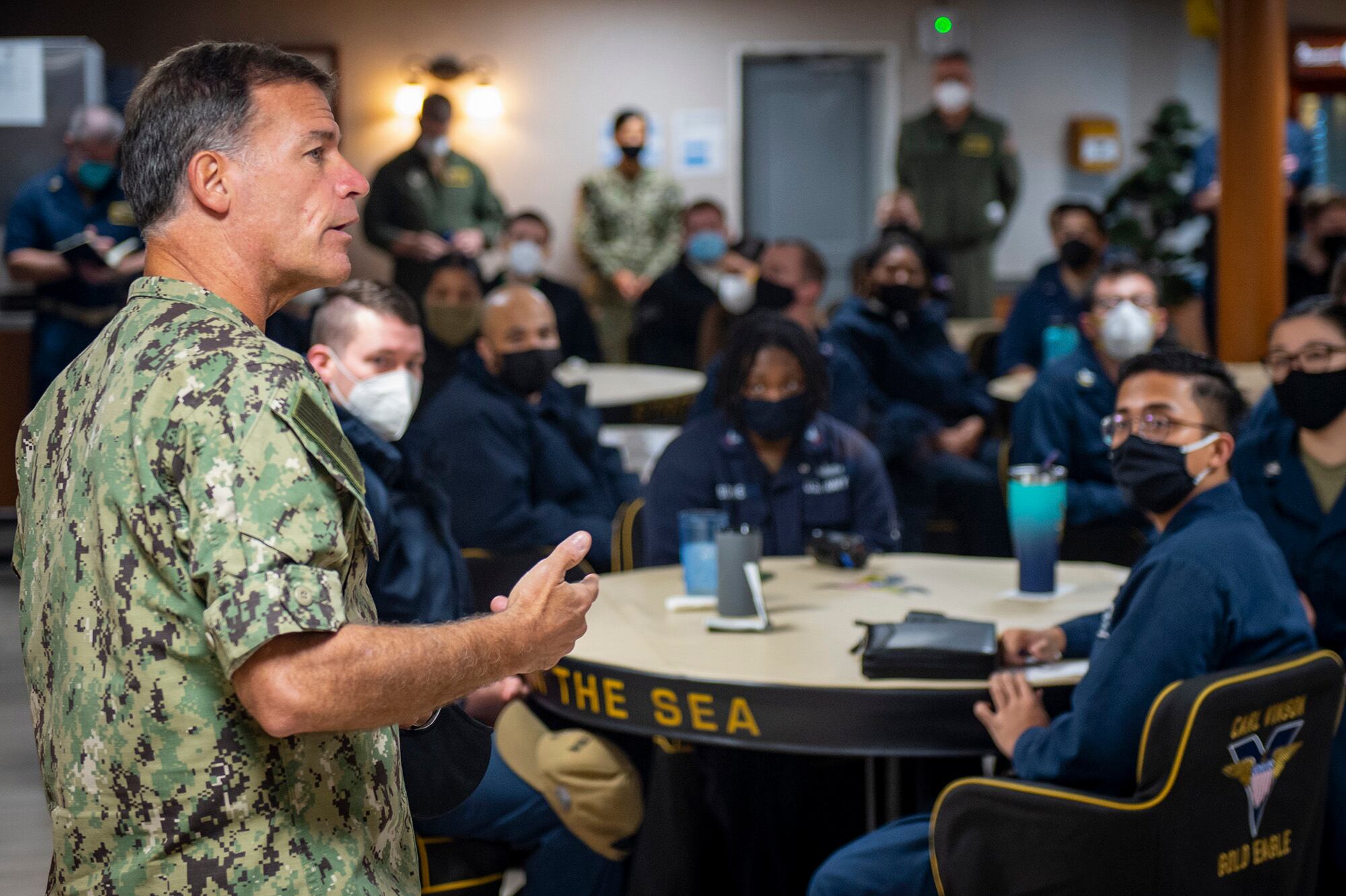The U.S. Navy has a regulation for everything, it sometimes seems, and kicking enlisted sailors out for “supremacist or extremist conduct” is no exception.
But the sea service has no idea how many sailors it has actually booted under that reg because it doesn’t track such violations.
News of this knowledge gap comes as the Pentagon works to assess supremacist extremism in the ranks following the Jan. 6 Capitol attack.
Section 1910-160 of the Naval Military Personnel Manual, known in mil-speak as MILPERSMAN, covers “separation by reason of supremacist or extremist conduct” and lays out the circumstances under which a sailor should be separated.
“Members must be processed following disciplinary or administrative action for any substantiated incident of serious misconduct resulting from participation in supremacist or extremist activities,” the regulation states.
Sailors must be processed out following disciplinary action taken for any substantiated incident that involves illegal discrimination or “advocating the use of force or violence against any federal, state, or local government or agency thereof, in violation of federal, state or local laws.”
RELATED

It also lists several Uniform Code of Military Justice articles that would likely be connected to such cases.
Any commanding officer would list a violation of MILPERSMAN 1910-160 as a reason for separation in the required paperwork.
But when Navy Times filed a Freedom of Information Act request last month seeking records for sailors separated under this supremacist and extremist regulation, Navy Personnel Command officials admitted that they don’t track how many sailors are separated under that or any MILPERSMAN section.
“When it comes to the reason why a Sailor is administratively separated from the Navy, our system does not track those separations based on the MILPERSMAN violation,” Navy Personnel Command spokesman Lt. Cmdr. Matt Knight said in an email.
Navy Personnel Command officials said in a statement Thursday that upgrades in the works will turn existing legacy systems and data bases “into a high quality integrated authoritative data environment” that will improve the service’s reporting and analytics capability.
Knight wrote earlier this week that the Department of Defense mandates “a standardized set of characterizations and reasons for separation.”
“The Navy does not maintain a separate list of separations for misconduct to readily identify those discharged for some specific acts of misconduct,” he said, later adding in an email that “the information in the forms is not digitally searchable in our systems.”
In their response to the Navy Times FOIA request, Navy Personnel Command officials denied the request, writing that they would have to crack open the personnel file of every separated sailor to see if the extremist regulation was cited as a reason for separation.
Navy Times is appealing that denial.
RELATED

Such gaps in records are not limited to the Navy.
The Pentagon has separation codes it applies to any service member leaving the military, but declined this week to share the current code list, despite the fact that they were once public information.
“It is Departmental policy that Separation Program Designator codes lists are ‘For Official Use Only’ and will not be furnished to any agency or individual outside the Department of Defense,” Pentagon spokesman Army Maj. César Santiago said in an email.
Getting a tally of how many sailors have been separated under MILPERSMAN 1910-160 would provide at least a base point for beginning to understand the issue of extremism in the ranks, a knowledge gap the Navy shares with the rest of the U.S. military.
Assessing just how many service members have ties to white supremacist or extremist movements has taken on added urgency following the Jan. 6 attack on the Capitol, one that involved veterans and active-duty troops at several prominent points in the day’s chaos.
On the Navy side, the so-called “QAnon Shaman” was once an enlisted sailor himself.
The Navy not tracking such data reflects a broader shortcoming across the military, according to Eugene Fidell, a civilian attorney who specializes in military law.
RELATED

“The military’s failure to maintain data, and data that are comparable from service to service, is a continuing problem,” Fidell told Navy Times.
News of the Navy not tracking such a metric comes as Defense Secretary Lloyd Austin directed commanding officers and supervisors at all levels this week to hold a one-day stand down to address extremism in the ranks over the next two months.
Pentagon spokesman John Kirby noted Monday that the stand down isn’t designed to be a panacea.
“This is an opportunity for leadership to listen to the men and women they lead,” Kirby told reports. “This is just a step in what the secretary believes will be a very deliberate process to tray and tackle this problem. He understands a one-day stand down does not solve anything. It might bring to light concerns and experience that he might not be aware of.”
RELATED

Studies have found that right-wing extremists were responsible for more domestic terrorism attacks this century than any other extremist group, a senior defense official told reporters in January.
“We clearly recognize the threat from domestic extremists, particularly those who espouse white supremacist or white nationalist ideologies,” the official said. “We are actively involved in always trying to improve our understanding of where the threat is coming from as a means of understanding and taking action.”
Geoff is the managing editor of Military Times, but he still loves writing stories. He covered Iraq and Afghanistan extensively and was a reporter at the Chicago Tribune. He welcomes any and all kinds of tips at geoffz@militarytimes.com.





